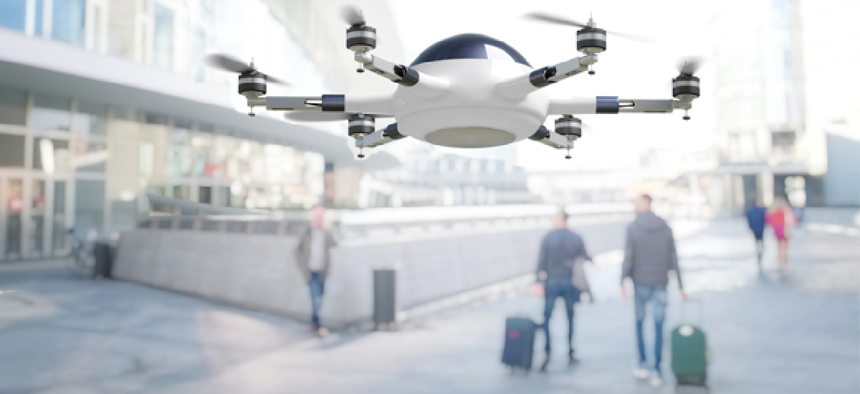What drones mean for surveillance

Experts explore how law enforcement is using unmanned vehicles and the ethics that such quickly evolving tools entail.
As drone technology evolves, the federal government has responded with regulations, such as the recently released rules on small unmanned aircraft. Some would argue that the government’s slow integration of drones into the national airspace is holding back businesses like Amazon that want to put the technology into daily use. Others, however, think the government is right to be cautious until the parties involved get on the same page with matters such as privacy.
These issues were debated by panelists at a Sept. 27 event hosted by the Cato Institute, a libertarian think tank.
Privacy was a major consideration in the Obama administration’s February 2015 presidential memorandum on drone use, according to Kristi Lane Scott, the deputy director of the Justice Department's Office of Privacy and Civil Liberties. It was written in such a way, Scott said, that drones can’t be used by police to hover over a crowd or peer over a tree line. If a drone is being used by law enforcement, there needs to be a reason for it, she said.
“The department wanted to make sure that as they’re using these systems that privacy considerations were baked in,” she said.
However, the circumstances in which law enforcement may use drones has not been clearly articulated, according to Tim Adelman, an attorney with LeClairRyan. During a campus shooting at Virginia Tech, for example, police didn’t understand why they weren’t allowed to use a drone to look for the shooter. Similarly, a sheriff in Texas didn’t see how he couldn't use a drone as a tool for law enforcement when his son could use it as a toy, he said.
Many localities require police to get a warrant to use a drone, which can complicate matters when they want to use it to look at infrastructure or to look for a missing person because there is no one to serve with a warrant, he said.
But while law enforcement might feel restricted by regulations from the Federal Aviation Administration or local governments, Adelman said many important issues remain unresolved, such as whether persistent surveillance or using drones to monitor crowds will be permitted.
“That is something that needs to be talked about,” he said.
The privacy issues will become even more pressing as the technology improves, he said. Right now drones are limited by battery life and camera technology that can’t pick up faces, he said, but that won’t always be the case. Scott agreed, saying DOJ would be looking at its policies every three years to keep up with changing technology.
While the technological abilities of drones don't currently allow them to be used for mass surveillance, Jay Stanley, the senior policy analyst at the American Civil Liberty Union’s Speech, Privacy, and Technology Project, said it’ll be here soon.
Earlier this year Cessna aircraft were reported being used to monitor activities above Baltimore by Bloomberg Businessweek. Operated by Persistent Surveillance Systems, the planes were kept in the air for 10 hours, allowing police to track people retroactively, like a TiVo for movement on the ground.
“I think that as soon as the technology is there, we know the Cessnas that are used in this wide-area surveillance will be replaced by drones,” Stanley said.
He was in favor of the FAA and other government agencies taking their time relaxing regulations. The original rules might have been too strict, he said, but it's easier to loosen regulation on law enforcement than it is to tighten it.
It is already fairly easy for law enforcement to conduct aerial surveillance, Stanley said, thanks to a Florida v. Riley -- a Supreme Court Case that said police didn’t need a warrant to observe a suspect's property from public air space. How exactly drones could change that is not known, he added.
Another question surrounding the use of drones was raised in Dallas earlier this year, when police used a ground-based robotic vehicle to kill a sniper. Many wonder whether an aerial drone could be used in the same way, he said.
“There is a consensus that armed drones are a nonstarter and shouldn’t be pursued,” he said. “But I’m not sure how long that will last.”





